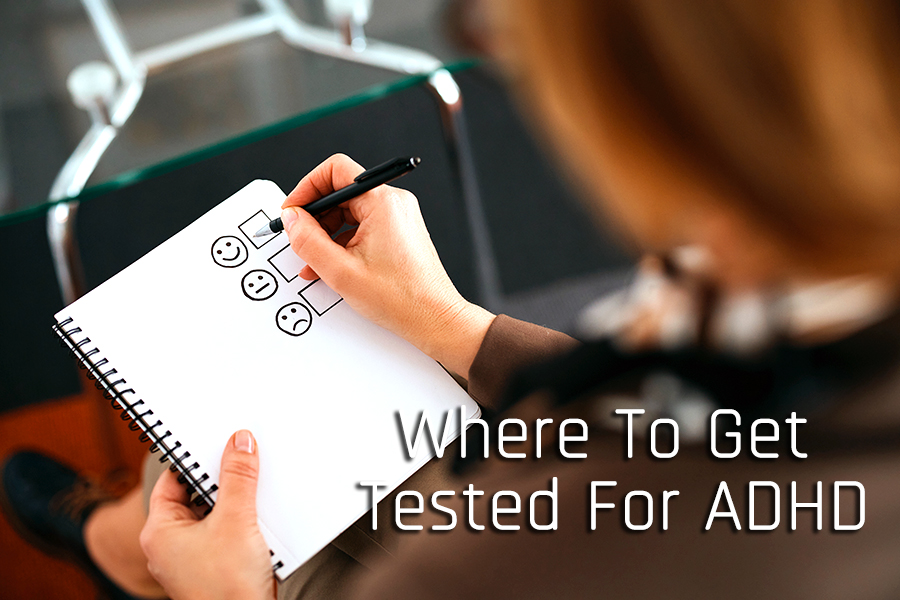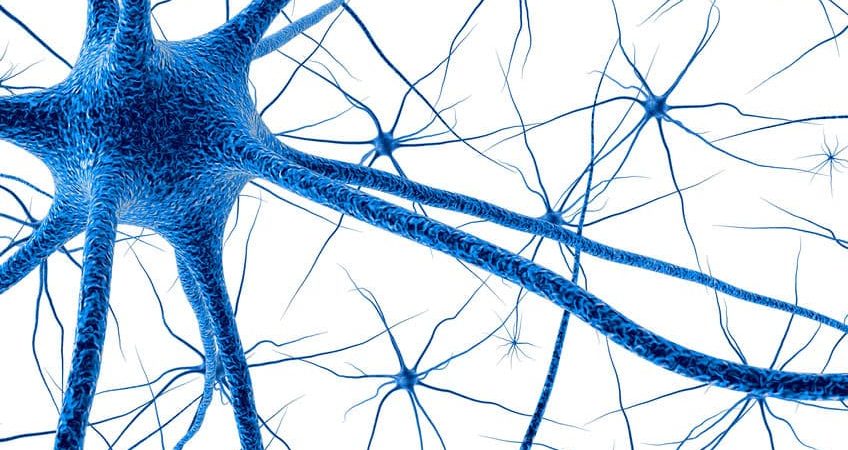Table of Contents
Introduction
Attention Deficit Hyperactivity Disorder (ADHD) is the most common neurodevelopmental disorder, manifesting in symptoms of inattention, hyperactivity or impulsivity. It is a disorder which begins in childhood, and may persist into adulthood if undiagnosed or untreated.
Although highly prevalent, ADHD is often misunderstood, leading to high rates of misdiagnosis. Thus, it is important for potential patients of ADHD to clearly understand the various testing and diagnostic procedures for ADHD. This could be important in preventing disorder from going misdiagnosed or even undiagnosed as this could lead to substantial negative consequences towards a person’s life – affecting their ability to carry out daily tasks, their mental wellbeing and the relationships with the people around them.
This article outlines the different diagnostic procedures of ADHD and the most common ways that adults can get tested for ADHD.
What Does An ADHD Test Look Like For Adults?
What is an ADHD test?
Testing for Attention Deficit Hyperactivity Disorder (ADHD) involves the diagnostic assessment process carried out by experienced professionals, using the appropriate diagnostic tools and guidelines, to provide an opinion on whether their patient has ADHD. The end product of this procedure is a diagnosis of ADHD. Each diagnosis is specific to each patient, as the patient’s background and life context are also taken into account during the assessment process.
Typically, a test assessing for ADHD would involve a number of professionals who have been trained to carry out the necessary assessment procedures that strictly adhere to the guidelines provided by the fifth and latest edition of the Diagnostic and Statistical Manual of Mental Disorders (DSM-V). These professionals may include a general physician (GP), pediatrician, psychologist and psychiatrist.
What is the testing process like?
An ADHD assessment can be performed through the use of psychometric scales and an interview-based evaluation of their patient’s mental health history, medical history, background and life context. All the information provided through the scales and the interview is comprehensively evaluated according to the DSM-V guidelines for diagnosing ADHD. Finally, the healthcare provider would form an opinion and produce an official formulation and diagnosis for the patient.
With adults, testing and diagnosing ADHD can be more difficult as symptoms of ADHD tend to present in more complex ways as compared to childhood. Oftentimes, adults initially screen themselves for ADHD through online self questionnaires, which lead them to seek an official diagnosis for ADHD. Other times, adults may seek a diagnosis for ADHD after their own child has been diagnosed with ADHD.
When conducting assessments with a licensed professional, the adult may be asked to complete a self-report scale as a checklist for any ADHD symptoms. Furthermore, the adult’s parents, or people who may have known them as a child, may be interviewed or asked to fill out a behaviour rating scale for a more comprehensive evaluation.
Types of ADHD Tests
ADHD can be diagnosed through a comprehensive evaluation based on the guidelines provided by the fifth and latest edition of the Diagnostic and Statistical Manual of Mental Disorders (DSM-V). Furthermore, clinicians may also use diagnostic tools or scales to assist their evaluation.
The DSM-V’s diagnostic criteria for ADHD
To be diagnosed with ADHD, the DSM-V states that 6 or more of inattention symptoms, and/or 6 or more of hyperactive-impulsive symptoms must be present for a duration of at least 6 months before an ADHD diagnosis can be formulated.
Mainly, there are 3 types of ADHD symptom presentations.
- The Inattentive type presents with symptoms involving difficulties in paying attention, but is not hyperactive or impulsive.
Inattentive symptoms of ADHD include:
- Inability to focus or sustaining attention
- Easily distracted by unrelated stimuli
- Difficulty with organising and completing tasks
- Avoidance of tedious tasks that require sustained attentional effort
- Disorganised
- Often losing belongings
- Daydreaming
- Forgetfulness
- Poor time management
2. The Hyperactive/Impulsive type presents with symptoms involving hyperactive and impulsive behaviour, but does not struggle with attentiveness.
Hyperactive-Impulsive symptoms of ADHD include:
- Inability to sit or stand still
- Often fidgeting or squirming in their seat
- Talking excessively or loudly
- Interrupting others in conversation
- Intruding on others (lack of boundaries)
- Impatience
3. The Combined type involves a combination of both inattentive and hyperactive/impulsive presentations of ADHD symptoms.
Symptoms must occur across at least 2 or more settings (e.g, at home, school, work, etc.) and must have been present before the age of 12 years.
It is also important that these symptoms cannot be better explained by any other mental disorder, and that they do not occur exclusively during a psychotic episode or psychotic disorders like schizophrenia.
The Types of ADHD Tests
Besides assessing the patient’s background, life circumstances and presenting symptoms using the DSM-V’s criteria for diagnosing ADHD, clinicians may also use ADHD tests like diagnostic tools or scales to assist their evaluation.
The most commonly used diagnostic tools include:
- Behavior Assessment System for Children (BASC), which seeks to assess the emotions and behaviour of young children.
- Adult ADHD Self-Report Scale (ASRS-v1.1), which is a self-report checklist of all the ADHD symptoms listed in the DSM-V.
- Diagnostic Interview for ADHD in adults (DIVA-5), which is a self-report checklist of the main core symptoms of ADHD – attention and hyperactivity-impulsivity.
Here is a list of other common scales that may be used:
- Neuropsychiatric EEG-Based Assessment Aid (NEBA) System, a scan that measures theta and beta brain waves; people with ADHD have higher theta and beta brain waves compared to people without ADHD.
- Conners Rating Scale, which identifies and evaluates children’s social, behavioural and academic issues.
- Child Behaviour Checklist/Teacher Report Form (CBCL), an assessment used by educators to identify problematic emotional and behavioural conduct in children
- Tests of Variable Attention (TOVA) is a computerised test designed to test attentional skills.
Who Can Test and Diagnose ADHD for Adults?
Most people who are seeking ADHD testing and diagnostic confirmation, count on both medications and psychological treatment/coaching. It is strongly advisable to check the regulations for ADHD testing and diagnosis in the respective country, to make the ADHD testing process time- and cost-efficient.
For example, in most countries a diagnosis of ADHD made by a psychologist or a neuropsychologist is not sufficient, to access treatment with medications, however the person may be able to access psychological treatments already.
In Australia general practitioners can make a provisional (tentative) diagnosis of ADHD and initiate certain ADHD medications on their own, without an input from a psychiatrist. A formal ADHD testing and a diagnosis from a psychiatrist will be still required, to access a full range of treatment.
In some European countries, e.g. UK, France, Germany, and Australia the diagnosis must be made by a psychiatrist, in order to access medications and other supports, e.g. financial allowance via certain programs. Family doctor and psychologist can then take over the treatment and continue on with the recommendations from a psychiatrist.
In the United States ADHD can be tested and confirmed by a GP/family doctor as well as by a psychiatrist, and the treatment is initiated by the same doctor who made the diagnosis.
Is It Worth Getting An ADHD Diagnosis?
To put it simply, if you are experiencing any symptoms of ADHD, it is worth getting a diagnosis.
If ADHD goes untreated due to such inaccuracies in diagnosis, there can be substantial negative repercussions towards a person’s life, affecting their ability to carry out daily tasks, their mental wellbeing and the relationships with the people around them. Moreover, having ADHD poses a high risk of developing other psychiatric conditions like depression, anxiety and alcohol use disorder. If left unaddressed, ADHD and its comorbidities will further complicate the symptoms of ADHD and make it even more difficult to resolve.
Thus, it is definitely worth getting an ADHD test and getting a diagnosis for ADHD, especially if you are experiencing the classic symptoms that may be hindering your quality of life. Moreover, it is also important that the diagnostic procedures of ADHD are appropriately applied and adhered to, by experienced mental health professionals, in order to produce a valid and reliable diagnosis allowing your access to treatment.
How Long Does ADHD Testing Take For Adults?
The duration of an ADHD test depends on the type of doctor or specialist you see.
Typically, ADHD can be diagnosed within one session with a licensed healthcare professional that is trained to diagnose ADHD. A consultation with a psychiatrist can last around 1 to 2 hours, while a consultation with a general practitioner (GP) can go from 30 minutes to an hour.
However, if you consider the duration of the process of acquiring an appointment for an ADHD assessment, the time taken to get an ADHD diagnosis could take weeks to months. For example, consultations with a psychiatrist in Australia or United Kingdom typically have a longer waitlist (ranging from a few weeks to months), whereas GP consultations don’t typically have a waitlist. In countries like Canada or United States, the process is often shortened to a walk-in consultation from a GP.
What is The Best Option For You?
Again, there are many possible pathways that you may choose to go through when deciding to get an ADHD assessment. Choosing the best option for you could depend on the type of assessment outcomes desired. It is important for patients to consider the treatment outcomes provided by each healthcare provider, as different doctors and specialists use similar diagnostic methods for ADHD (i.e., evaluation of patient’s background, life circumstances and presenting symptoms using the DSM-V’s criteria and diagnostic tools like psychometric scales to further support their medical opinion).
For example, your family doctor or general practitioner could be more familiar with your unique health and life circumstances, leading to a more holistic ADHD assessment.
In some countries, like Australia, your family doctor will be unable to provide medication as a treatment upon diagnosis, but will be able to refer you to an ADHD specialist – psychiatrist. On the other hand, a psychiatrist will be able to diagnose ADHD and prescribe medications for treatment, or will be able to refer you back to the GP, supporting your treatment via GP rooms.
References
American Psychiatric Association. (2022). Diagnostic and statistical manual of mental disorders (5th ed., text rev.). doi.org/10.1176/appi.books.9780890425787
Furzer, J., Dhuey, E., & Laporte, A. (2022). ADHD misdiagnosis: Causes and mitigators. Health Economics, 31(9), 1926-1953. doi.org/10.1002/hec.4555
Leahy, L. G. (2018). Diagnosis and Treatment of ADHD in Children vs Adults: What Nurses Should Know. Archives of Psychiatric Nursing. doi:10.1016/j.apnu.2018.06.013
WebMD. (n.d.). Diagnosing add / ADHD: How doctors assess children and adults. WebMD. Retrieved October 21, 2022, from https://www.webmd.com/add-adhd/childhood-adhd/diagnosing-adhd
Diagnosis of ADHD in adults. CHADD. (2018, May 24). Retrieved October 21, 2022, from https://chadd.org/for-adults/diagnosis-of-adhd-in-adults/



